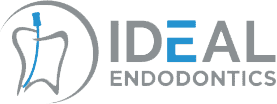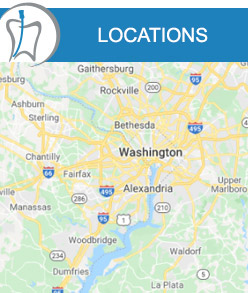Root Canal Treatment Instructions in Washington, DC and Woodbridge, VA
Read our root canal treatment instructions and get to know more about it. Please contact us if you have any questions.


Table of Contents:
When Root Canal is Done in 1 Visit
When Root Canal is Done in 2 Visits
After Completion of the Root Canal Filling
Post-Operative Surgical Instructions
You may experience some discomfort after your treatment. The tooth and its surrounding tissues may have been irritated by the inflammation that was present in the pulp (nerve). The manipulation of the tooth and its supporting tissues during treatment may also produce irritation. It is often impossible to judge whether infection is present and if so, how severe the infection really is. If you have been instructed to start an antibiotic, please do so at once and finish the entire prescription. If you have not been instructed to start an antibiotic and swelling does occur you should take an antibiotic.
When swelling is present it takes about 72 hours for the antibiotics to become effective. The swelling may not begin to subside for up to 72 hours. Swelling may be reduced by placing cold (ice) packs to the outer surface of the face in the area treated. Keep cold pack in place 10 minutes and then repeat 10 minutes later. If you do not have swelling, often rinsing your mouth with warm salt water will help speed the healing process. Use 1/2 teaspoon of ordinary table salt to one glass of warm water. Repeat rinsing several times each hour while tooth is uncomfortable.
NSAIDS will usually be helpful in controlling discomfort. Discuss with your doctor which option may be best for you. If not, fill the pain prescription that you received at the office. If pain is not relieved after medication or seems to increase rather than decrease please call the office for further instructions.
Try not to use the tooth in chewing, until after the tooth is restored by your general dentist. This will prevent fracturing the tooth. Give nature time to help the healing. A permanent restoration (filling, inlay or crown) will give the tooth more protection and strength as well as prevent leakage.
Although the root(s) of your tooth are permanently sealed, the outer surface is only filled with a “temporary” filling material. Therefore, it is advisable to see your regular dentist as soon as you can to restore the tooth.
Your root canal has been started and much of the difficult work is accomplished. We still need to see you again to complete treatment. You may experience some discomfort after the first treatment. The tooth and its surrounding tissues may have been irritated by the inflammation that was present in the pulp (nerve). The manipulation of the tooth and its supporting tissues during treatment may also produce irritation. In cases such as yours, it is impossible to judge whether infection is present and if so, how severe the infection really is. If you have been instructed to start an antibiotic, please do so at once and finish the entire prescription. If you have not been instructed to start an antibiotic and swelling does occur you should take an antibiotic.
When swelling exists it takes about 72 hours for the antibiotics to become effective. The swelling generally will not start to subside for at least 72 hours. Swelling may be reduced by placing cold (ice) packs to the outer surface of the face in the area treated. Keep cold pack in place 10 minutes and then repeat 10 minutes later. Rinsing your mouth with warm salt water solutions will help speed the healing process by stimulating circulation. Use 1/2 teaspoon of ordinary table salt to one glass of warm water. Repeat rinsing several times each hour while tooth is uncomfortable. NSAIDS will usually be helpful in controlling any discomfort. Consult your doctor to determine the best option for you. If not, fill the pain prescription that you received at the office. If pain is not relieved after medication or seems to increase rather than decrease please call the office for further instructions.
Try not to use the tooth in chewing, until after the tooth is restored by your general dentist. This will prevent fracturing the tooth. Give nature time to help the healing. It is very important to keep your final appointment so the root canals can be filled and sealed permanently.
Failing to keep your next appointment can result in severe infection and possible loss of your tooth.
• Any infection or inflammation that was present in your tooth has been eliminated. The canal(s), have been sealed. Nature must now have time to repair any damage that may have occurred.
• The tooth may be tender for several days. Warm salt water rinses may help. Sometimes analgesic tablets, aspirin or aspirin substitute should be taken.
• DO NOT CHEW ON THE TOOTH UNTIL ALL OF THE TENDERNESS IS GONE.
• Although the root(s) are permanently sealed, the outer surface is only sealed with a “temporary” filling. It may last for many weeks or months, but it is advisable to see your regular dentist as soon as you can to restore the tooth.
• A permanent restoration (filling, inlay or crown) will give the tooth more protection.
1. Do not lift your lip to view the site of operation. You might tear the sutures.
2. Apply ice over the site of operation ( on the facial side ). 10 minutes on, then 10 minutes off, for 8 hours. This will help control swelling. If bruising occurs, moist heat may be applied as needed beginning with the second day.
3. The teeth should be given their usual care, except in the region of the operation.
4. The day following your surgery, rinse your mouth gently with a glass of warm salt water ( 1/2 teaspoon of salt in a glass of warm water ) 4-5 times a day until sutures are removed.
5. Follow your own natural inclination as to diet, but for your own comfort, soft foods are indicated for the first 24 hours. Drink plenty of fluids, but avoid drinking through a straw, or from a bottle. Cigarette smoking should also be avoided.
6. Take any prescribed medications as directed.
7. Return for suture removal at your given appointment.
8. In case of emergency notify the office you were treated at immediately.







